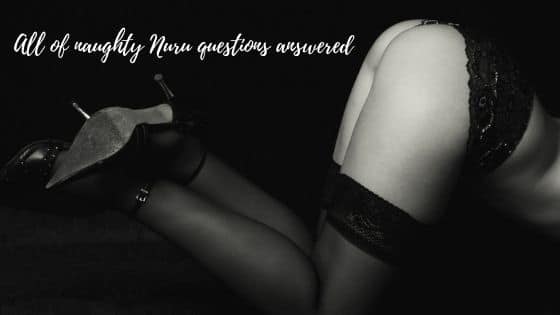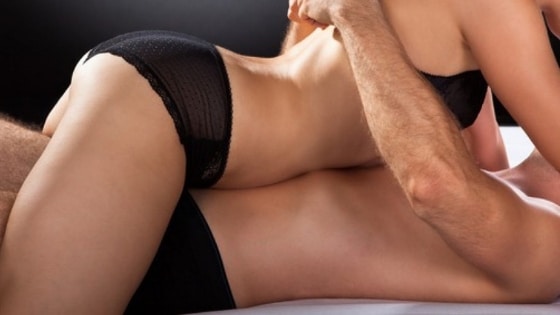Forget them blues! get an Outcall massage in London The beginning of September often marks…

Update Your Massage Knowledge
Everything you need to know about other types of massage therapies
The different types of massage therapy you might never have heard of
Many people today have started using alternative forms of therapy to help relieve the symptoms of problems that were commonly treated by more conventional means. But as more and more people become aware of the need to look after one’s health many seek new alternative and complimentary medicine and treatments.
One such popular treatment is that of massage. And although many may think it is a recent evolvement this couldn’t be any further from the truth. In fact, unbeknown to many people massage therapy has been around for hundreds if not thousands of years. In fact, the very first mentioning of the word massage relating to medicine was almost 4,000 years ago by the father of medicine himself Hippocrates, in which he famously wrote the words. ” The physician must be acquainted with many things, and assuredly rubbing”. Over the year’s massage therapy and techniques have developed from merely rubbing to involve a wider range of motions and movements. All form of hand movement during a massage usually fall into one or more of the following four categories;
- Effleurage; These movements consist of mainly stroking movements that usually start and end the massage treatment and applied using the full palm of the hand. These movements are also used to help apply lotion or massage oils to the body.
- Petrissage: These movements consist of compression movements and include skin rolling, rolling, friction, and kneading which itself has various motions. All of these movements are used with varying degrees of pressure with often both hands. The amount of pressure used is normally dependent upon the area of focus and the symptoms caused.
- Atonement: Now these movements are usually the more vigorous and consist of tapping, cupping, pounding, beating and friction movements and are designed to help more with toning of the muscles.
- Vibration: The vibration movements used help to create a small tremor deep within in the tissue itself and is often directed along nerve pathways by using your fingers or thumb, shaking on the other hand is similar however, it creates a more rhythmic pattern when applied.
These include applying pressure to the parts of the body such as holding, vibrating, friction rocking, and various other techniques as mentioned above in the four categories. All of the varying techniques are used to help benefits the different areas of the body such as the lymphatic system, blood circulation, nervous system and even the musculoskeletal system. This combined approach has been known to positively influence a patient’s overall health and wellbeing.
Massage therapy has been used to treat various ailments symptoms and has even shown some promise in treating more chronic issues. Below is an non exhaustive list of problems Massage therapy can help to treat:
Reduction of stress.
Fight depression.
Helps improve sleep.
Increase blood circulation.
alleviate Anxiety.
Help with digestive disorders.
Reduce headaches.
Help with soft tissue sprains and injuries.
Help with arthritis.
Spasm and craps.
Reduce back pain.
Help boost the immune system.
Help increase flexibility.
Unsurprisingly massage has had profound effects on people suffering from mental health problems such depression and anxiety. As many modern health problems are attributed to stress it is thought that by combating stress with massage this can in turn help treat and lessen the effects of anxiety and even depression.
Many of those treated with massage noted that their symptoms overall were reduced significantly, including an overall decrease in anxiety, a better quality of sleep, improved energy levels, a reduction in fatigue and even increased circulation all of which combined were to seen to have a far widen effect on a person overall health.
Because of the growing popularity of alternative medicine and a growing reluctance for people to take antibiotics many people seek massage as their go to choose for a complimentary medicine, as with all forms of medicine and complimentary treatment the therapy should be carried out by a suitably qualified professional.
Because of the growing popularity there also been rise in the forms of massage and all of them have their own specific uses in the treatment of certain conditions. From older more traditional forms such as acupressure, shiatsu and lomi lomi to more modern techniques such as lymph drainage therapy and others that combine numerous methods Watsu (a combination of shiatsu and hydrotherapy).
There are now many varying forms of massage which include:
- Acupressure – An ancient form of healing believed by some to be older than acupuncture. Similar in its approach however uses pressure of the fingers rather than needles.
- Acupuncture – Is one of the oldest and most commonly used system of healing in the world. Uses the same principles as acupressure but uses needles instead of the hands.
- Aromatherapy – Many oils from plants, herbs and flowers have beneficial therapeutic qualities within them and are often used along massage for added benefit.
- Ashiatsu Oriental Bar Therapy – Is an ancient form of body work that combines Shiatsu with Chinese traditional medicine.
- Asian Bodywork – Refers to all forms of Asian bodywork such as shiatsu, Thai massage, Zen and many other forms.
- Chair Massage – A quicker form of traditional massage where the client remains clothes and seated, usually limited to the back, neck and arms.
- Cupping – A lit piece of cotton wool is placed inside a glass cup to create a vacuum before being applied to the body, and used for deep tissue massages. And came to light more recently during the 2016 Rio Olympics were athletes made use of the technique.
- Deep Tissue Massage – Uses slow strokes and applies direct pressure to the area of focus.
- Five Element Shiatsu – Uses a combination of shiatsu with traditional Chinese medicine, to release blocked energy within the body.
- Hydrotherapy – Involves the use of water in all forms to help with the healing process by massaging the tissue with pressure. Often uses ice packs and whirl pools.
- Lomi Lomi – Means literally to rub in Hawaiian and is an old form of traditional Hawaiian bodywork.
- Lymph Drainage Therapy – This form of massage helps the body to drain the lymphatic system with the application of light and rhythmic strokes. The lymphatic system is responsible for flushing out harmful toxins.
- Medical massage – Usually these therapists have an extensive knowledge of disease and illness and ways in which massage can help relieve symptoms.
- Reiki – Although not a form of massage itself Reiki is usually performed in combination with more traditional forms of bodywork.
- Shiatsu – Is very similar in concept to acupressure and is believed that by applying pressure to the rights parts of the body these imbalances will be corrected.
- Soft Tissue Massage – This is basically a general term used for any form of massage that uses light touches to treat soft tissue opposed to more vigorous one’s that a deep tissue massage makes use of.
- Swedish Massage – The most widely known form of massage is the Swedish which uses 5 basic movements to improve blood flow, relax the muscles and the mind.
- Thai Massage – This form of massage is as old as acupuncture and dates back over 2000 years, again this form of massage relies on removing blockages of built up energy and restore your body to its natural balance.
- – This is a combination of both traditional Japanese shiatsu massage techniques with those of hydrotherapy. Clients are usually lay in warm water to aid relaxation while the practitioner performs gentle shiatsu style movements over the body.
As you can from this non extensive list there are many forms of massage and dependent upon your individual need will determine which massage therapy is best suited to you. For instance, someone with back pain may require a deep tissue massage to unlock tense muscles and untrap a nerve. However, someone who suffers with trouble getting to sleep may well benefit from a watsu or shiatsu to help them relax and feel calmer within themselves.
If you would like to know more about the different types of hotel massage in London that we offer then why not check out our home page.



